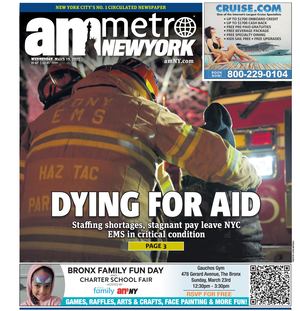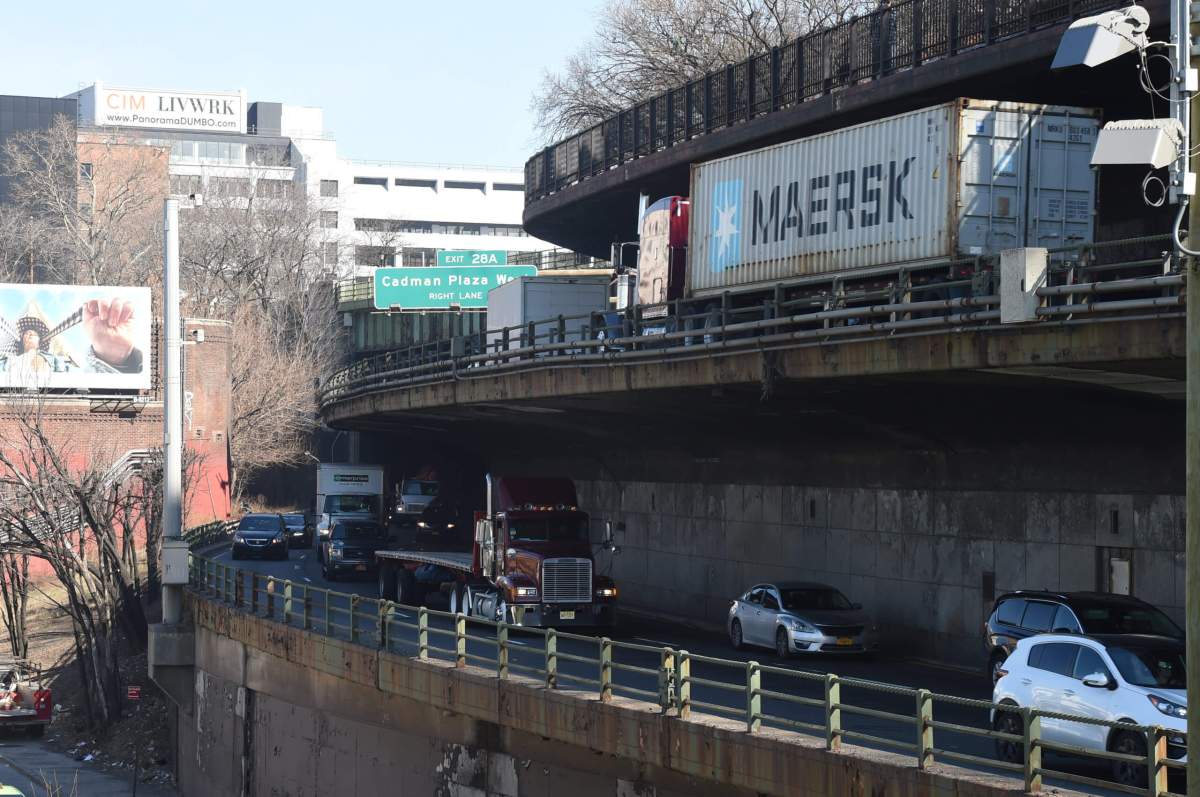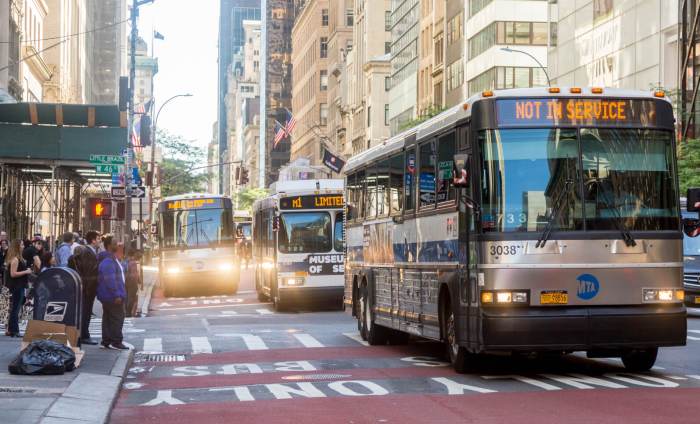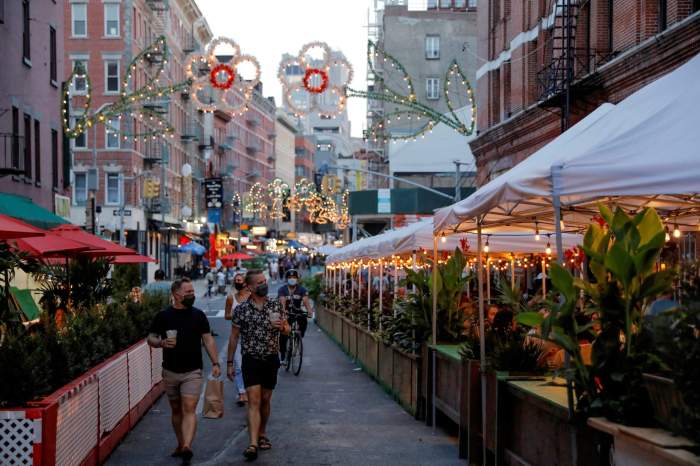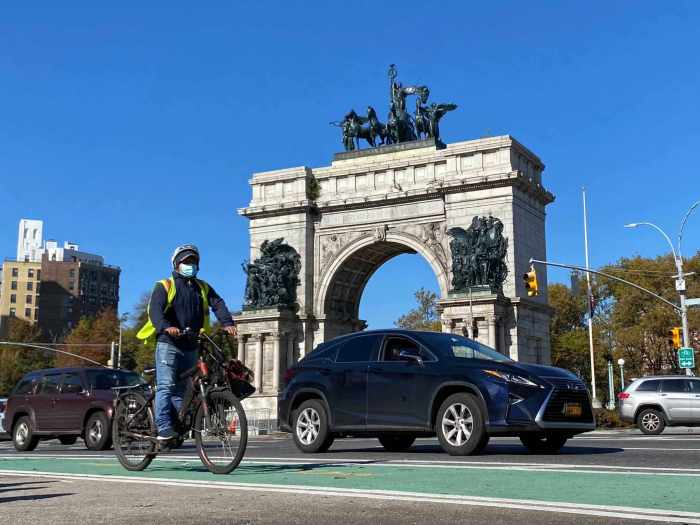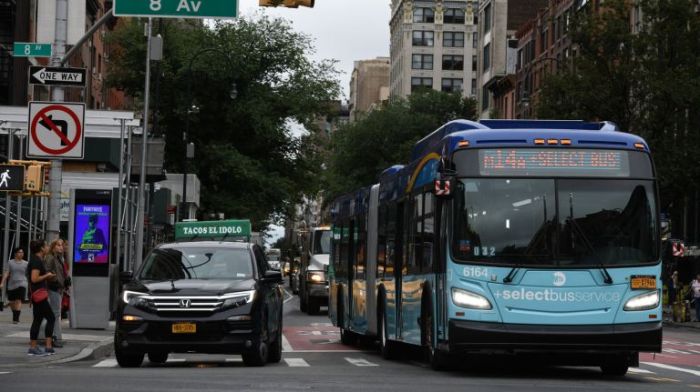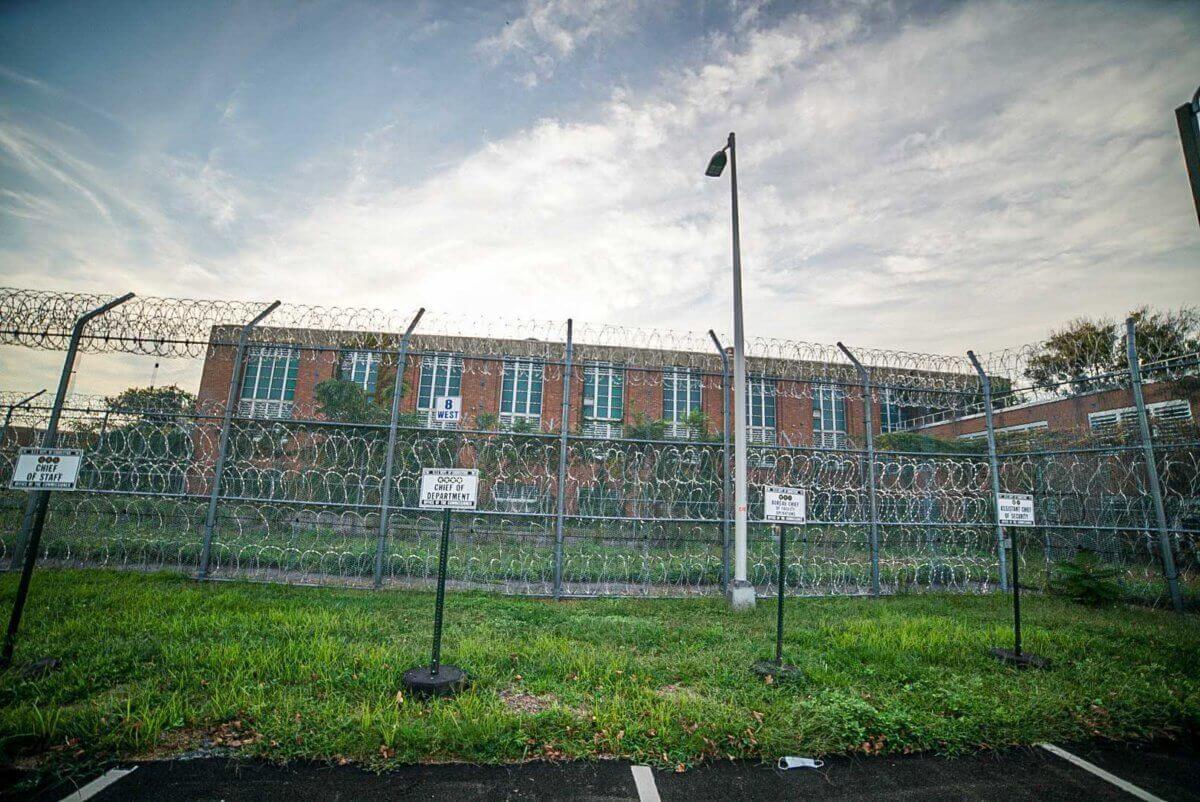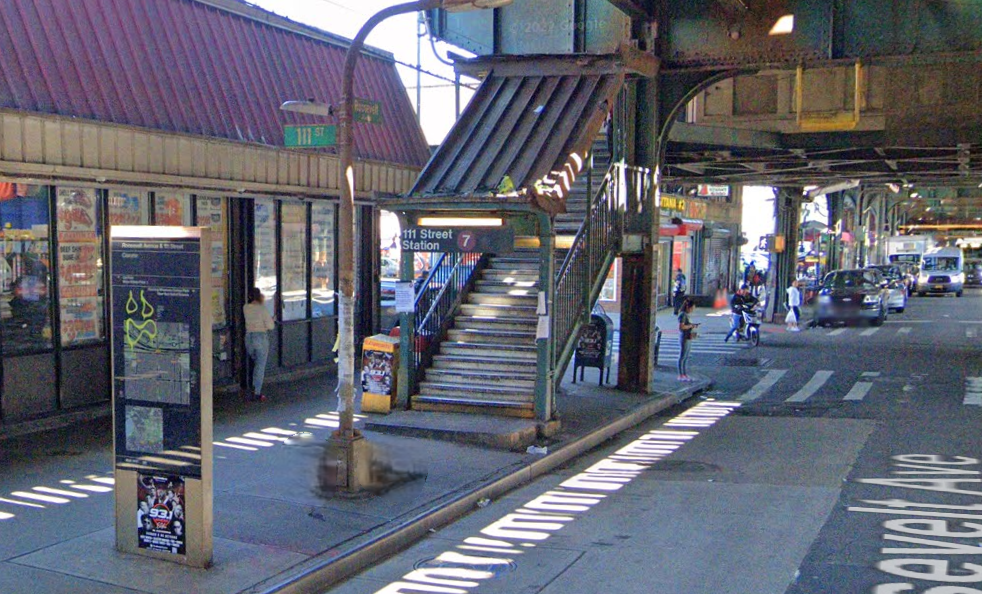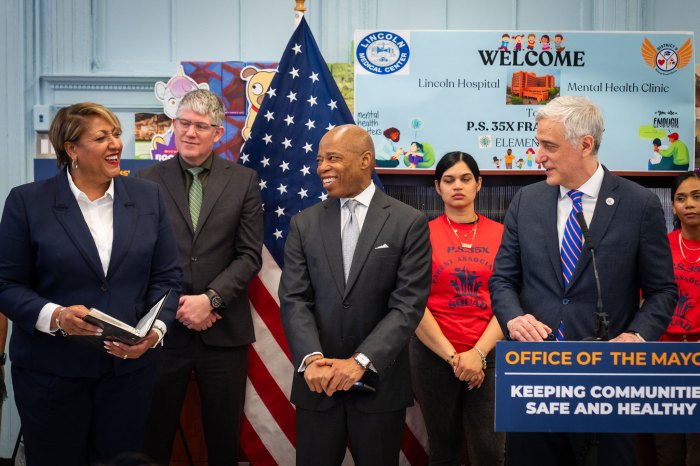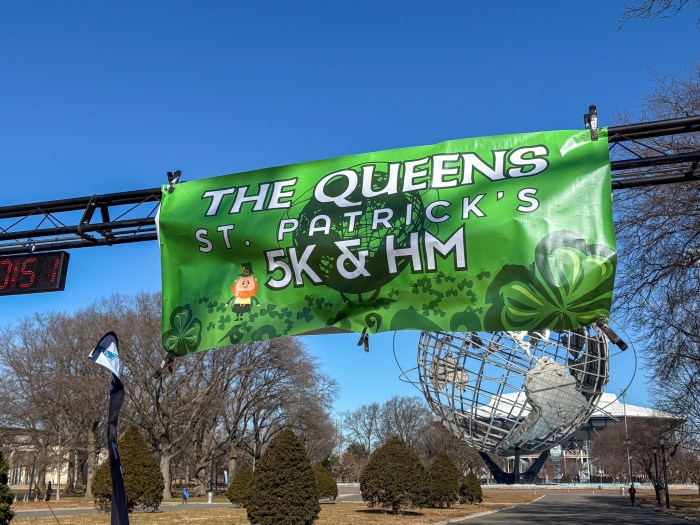The city wants to extend the lifespan of the dangerously-decaying Brooklyn-Queens Expressway at the Brooklyn waterfront by almost 20 years, giving officials nearly two more decades to come up with an actual plan for what to do with the ailing highway, Mayor Bill de Blasio announced Wednesday.
“We have a very different approach we’re announcing today. It is bold, it is different, it is innovative, it is about preparing for the future in a new way,” said de Blasio at his Aug. 4 daily press briefing. “Folks at the Department of Transportation have come up with a variety of new strategies to extend the current life of the BQE cantilever, up to 2040 and beyond.”
The mayor outlined a four-point plan for the 1954 roadway: Maintain the current infrastructure, do immediate fixes where the structure has decayed the worst, “hold heavy trucks accountable,” and then come up with a longer-term vision for the Interstate 278 corridor.
Experts previously said the BQE’s triple cantilever could become unsafe by 2025, but there are some concrete changes coming in the near future to ensure the structure can outlive that deadline, according to officials.
DOT will start narrowing the highway from six lanes to four slightly wider lanes with a new shoulder on a roughly half-mile stretch from Atlantic Avenue to the Brooklyn Bridge on Aug. 30.
Agency commissioner Hank Gutman said the narrowing will lighten the load of vehicles on the 67-year-old piece of infrastructure, make it safer during emergency situations, and cause fewer delays due to crashes.
The city will also finish ongoing concrete and rebar repairs on the BQE’s Hicks Street retaining wall shoring up the three-level section that wraps around Brooklyn Heights, and work on two-deck spans that have been deteriorating faster in 2022.
“That’s going to involve some closures and some delays, we’re going to try to do what we can overnight, to minimize the delays,” said Gutman.
De Blasio reiterated his vow to crack down on illegally overweight trucks on the highway, which cause outsize damage to the structure, by ordering monthly NYPD enforcement blitzes and installing so-called weigh-in-motion sensors, which automatically catch heavy haulers.
The sensors still require approval in the State Legislature and a signature from Governor Andrew Cuomo, but de Blasio hopes the city can install those next year under his successor’s mayoral administration.
Other measures to keep the busy highway intact — which pre-pandemic carried 150,000 vehicles a day, including 15,000 trucks — is to reduce corrosion by improving drainage, stop salting the surface in the winter, and waterproofing the joints.
The mayor and the commissioner said they will work to encourage freight and distribution companies to ship more of their goods via rail, water, or electric vehicles to reduce the number of gas-guzzling trucks on the road, while working with the city’s quasi-public Economic Development Corporation to build out better last-mile delivery centers that deploy smaller vehicles.
All of these pieces will give bureaucrats more time to figure out what to do with the highway, which has become a complex sticking point between city officials and residents since DOT for at least three years.
In 2018, the city put forth a controversial proposal to install a temporary highway atop the beloved Brooklyn Heights Promenade above the BQE, but after widespread backlash from local neighborhood groups and politicians, DOT withdrew those plans.
Many of the ideas presented on Wednesday echo proposals by that brain trust’s 72-page report from January 2020, including narrowing the lanes, monitoring weight, and punting for a longer-term plan across city, state, and federal agencies which all have jurisdiction over the highway.
Several alternative proposals emerged from public and private groups over the years, including linear parks and a pricey tunnel to replace the current structure, but de Blasio said big picture ideas will have to wait.
“Right now the notion that you’re going to turn it into a park overnight, obviously that wasn’t gonna happen,” he said. “We need to address the immediate needs of people trying to get around and how things are moved around this city, while transforming away from our current paradigm.”
DOT will start talking to residents and businesses along the corridor from Staten Island to Queens in the coming months, and the agency’s chief strategy officer said that just because the tweaks give the road another two decades, that doesn’t mean it’ll take that long to come up with a larger transformation of the roadway.
“The planning process is not going to take 10 or 20 years, the planning process is going to take, you know, a couple of years,” said Jee Mee Kim. “the remaining time is… whatever community-based vision is developed, needs to go through all of the approvals, the funding and financing, the implementation, and this 20-year fix buys us that time.”
The head of a Brooklyn Heights civic association was relieved to see movement on the BQE, but said residents will keep the pressure on city government to ensure officials move faster than 20 years for real change.
“We’re happy that action is happening to preserve the safety of the cantilever in the short term, nobody wants an accident to happen,” Lara Birnback, executive director of the Brooklyn Heights Association, told amNewYork Metro. “We’re going to ensure that this 20-year timeline is not a reason to kick the can down the road.”
